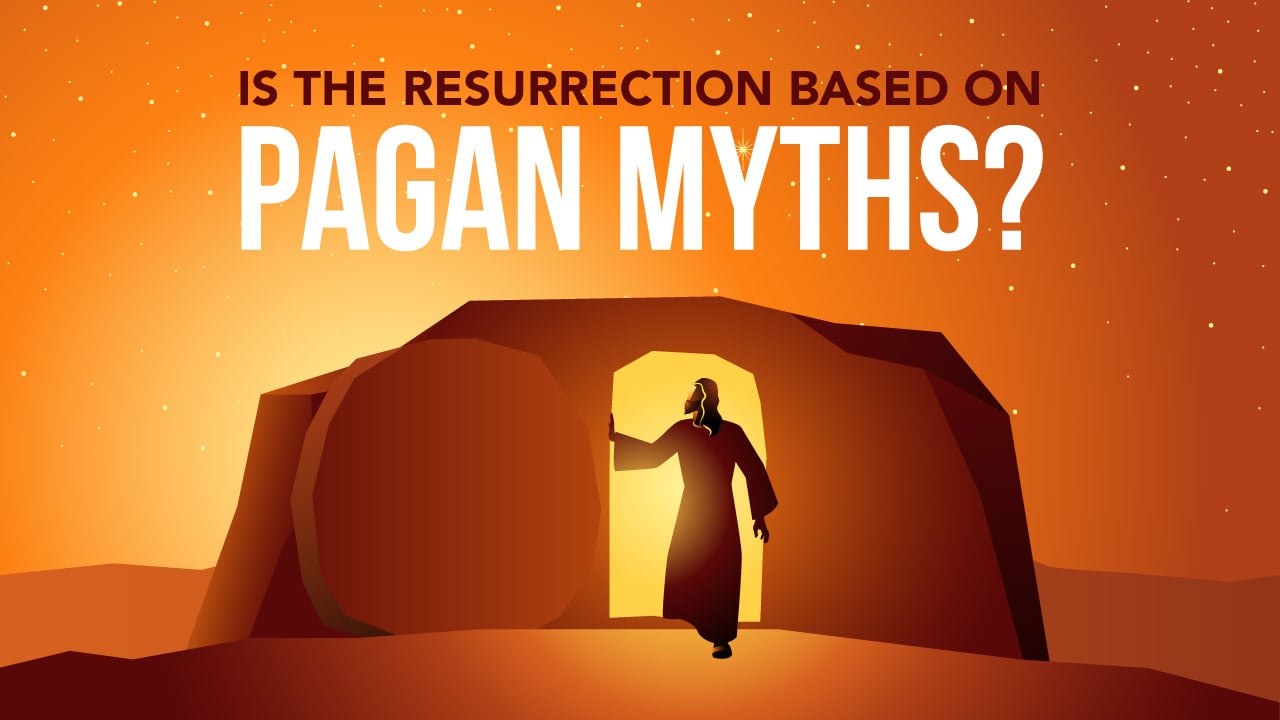You’re in a conversation, and someone asks, “Is there any real evidence that Jesus rose from the dead.”
What would you say?
Christianity is built on the claim that Jesus Christ rose from the grave on the third day after His crucifixion.
Today, 2,000 years later, the historical evidence for the resurrection of Jesus is overwhelming.
The next time someone asks if “there’s any evidence that Jesus rose from the dead,” here are three widely accepted facts to remember and share.
You’re in a conversation, and someone asks, “Is there any real evidence that Jesus rose from the dead.”
What would you say?
Christianity is built on the claim that Jesus Christ rose from the grave on the third day after His crucifixion. The Apostle Paul not only thought that the resurrection was an important thing to believe, he insisted that if it never happened, the faith of Christians was empty and that Christians were pathetic.
Today, 2,000 years later, the historical evidence for the resurrection of Jesus is overwhelming.
The next time someone asks if “there’s any evidence that Jesus rose from the dead,” here are three widely accepted facts to remember and share:
Number 1: There is very strong evidence that Jesus died on a Roman cross as the Gospels describe.
There are a few facts about the life of Jesus that no serious historian disputes. One is that Jesus was executed by crucifixion under the Roman procurator of Judea, Pontius Pilate. Numerous ancient sources outside the New Testament attest to his death, including the Jewish historian Josephus, Syrian philosopher Mara Bar-Serapion, Julius Africanus, and Lucian of Samosata.
We also know that the Romans were experts at executing people. Crucifixion was as an especially public and gruesome method of killing people, usually political rebels. Crucifixion involved extreme trauma, blood loss, dislocation of joints, and buildup of fluid around the heart. Victims typically suffocated after they could no longer lift themselves on their pierced hands and feet to breathe.
That alone would be sufficient to kill Jesus, but the Gospels also report that he had been beaten severely and likely lost a lot of blood prior to being crucified. And, just to ensure the job was finished, John’s account of the crucifixion reports that a Roman soldier thrust a spear into Jesus’ side after he died, likely piercing His heart and lungs.
Over the years, some skeptics have suggested that Jesus may not have actually died on the cross, and maybe recovered from his injuries. This so-called “swoon theory” just fails to take seriously the unanimous, historical testimony of His death, as well as the competence of the professional killers who were in charge of His execution.
That’s why, most scholars agree that Jesus definitely died.
Number 2: Three days after He did, Jesus’ tomb was found empty.
There were many would-be messiahs and revolutionaries crucified before and after Jesus of Nazareth, yet none of them founded a religion based on the claim that their founder had risen from the dead. Why?
One of the main reasons is that didn’t leave behind an empty tomb. In the case of Jesus, no body was found. And there were plenty of powerful enemies in Jerusalem, both Roman and Jewish, who had strong incentive to produce a body and squash the miraculous claims of Jesus’ followers.
Apologist and former cold-case detective J. Warner Wallace points out that producing the body of Jesus would have been the quickest way for His enemies to silence reports that He was alive, and to crush Christianity in its infancy. If the Romans or Sanhedrin had been able to point to a tomb containing the body of Jesus, His name would have been forgotten, His followers would have scattered, and His movement would have died.
But according to every historical record we have, from sources both friendly and hostile to Christianity, no one could point to a body including those who were in charge of watching over it. The Gospels report that the Jewish leaders, realizing how bad the empty tomb looked for them, paid Roman guards to circulate the story that His Disciples had stolen his body.
And that would have been a helpful tale to tell, except for the final point.
Number 3: The Disciples died for their claim that Jesus had risen.
One of the most powerful pieces of evidence for the resurrection of Jesus is the fact that Christianity exists. Following Jesus’ brutal death, His followers were demoralized and frightened. The Gospels report that all but one of the twelve disciples fled when Jesus was arrested, and that one of Jesus’ inner circle, Simon Peter, actually denied knowing Him. The entire movement looked certain to die with its Founder, and if it had, there would be no church or Christianity.
But something transformed these cowering men and women into fearless preachers, many of whom were willing to die for what they believed about Jesus. What happened? Their radical transformation requires an explanation.
People will often live for a religious story they know to be a lie. False preachers and scam artists often tell tall tales to gain money, power, and prestige. But who dies for a story that they know to be a lie? That is what the Disciples of Jesus did, and the church exists today because something convinced these men and women that Jesus was the son of God who was alive.
One of the earliest persecutors of early Christians was a young Pharisee named Saul of Tarsus. He converted to Christianity after claiming to have an encounter with the risen Jesus. Saul, who became known as Paul, went from hunting down Christians from city to city to becoming the most effective evangelist in history and the author of much of the New Testament. He invited skeptics of the resurrection to talk with witnesses who were still alive in his day, including over 500 who had seen the risen Jesus at one time. And like other Apostles, Paul endured torture and ultimately died for his testimony that Jesus was alive.
Taken together, these three historical facts—that Jesus died by crucifixion, that His tomb was empty shortly thereafter, and that the Disciples were willing to die for their claim that He had risen—require an explanation. The simplest explanation is that Jesus really did rise miraculously from the dead. All alternative explanations assume things against the evidence, like that Jesus never existed or that His followers were trying to gain power and influence by promoting something they knew to be false.
So, the next time someone says, “There’s no evidence that Jesus rose from the dead,” here are three widely-accepted facts to remember and share:
Number one: Jesus died.
Number two: On the third day, Jesus’ tomb was empty.
Number three: The Disciples died for their claim that Jesus had risen.
Cold Case Christianity (J. Warner Wallace):
- Is There Any Evidence for Jesus Outside the Bible?
- Why Jesus died so quickly on the cross
- How Can We Be Sure the Tomb of Jesus Was Empty?
- The Commitment of the Apostles Confirms the Truth of the Resurrection
Breakpoint.org:



 Colson Center
Colson Center


